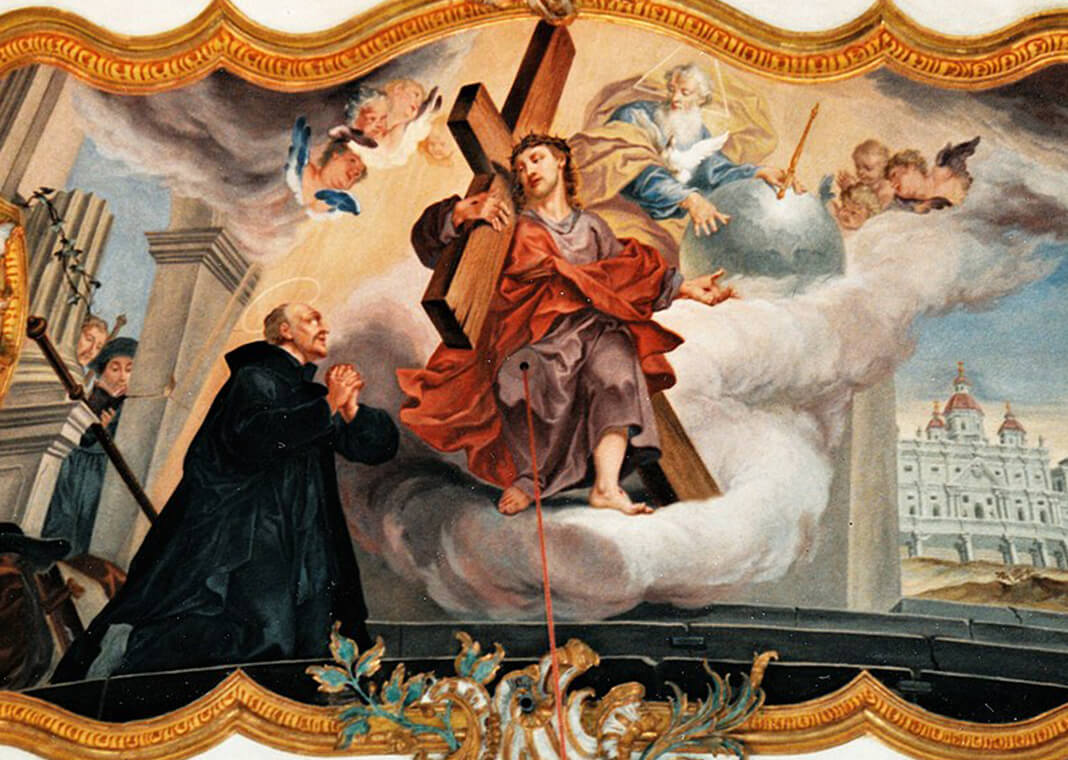
I have often struggled with the Ignatian practice that desires to carry the cross and ask for suffering. Why would anyone ask for suffering? In the Spiritual Exercises, Ignatius writes of the Three Degrees of Humility, with the third being to choose hardship rather than pleasures in order to imitate Christ most fully. It includes willingness to be a fool for Christ rather than be esteemed by others. The third degree of humility is self-sacrifice regardless of the cost—discomfort, poverty, ridicule, or death. Seriously? I am supposed to ask for that?
Then I came to understand St. Ignatius Loyola’s experience at La Storta from the inside out.
In St. Ignatius’s autobiography, two short lines are offered to describe what some would say was the culmination of Ignatius’s spiritual journey: “One day, a few miles before reaching Rome, he was at prayer in a church and experienced such a change in his soul and saw so clearly that God the Father had placed him with Christ the Son that he would not dare to doubt it. God the Father had placed him with his Son.” (96)
Ignatius had been praying to Mary to be placed with her Son for some time. This was 16 years after Ignatius began his spiritual journey. These were years of fumbling through faith, trying to discern the will of God, learning, and building community. These were years of traveling, service, and prayer. To be placed with Jesus was Ignatius’s ultimate desire, not just to be a companion of Jesus, but to carry his cross. This desire can only be understood in the context of a loving relationship, years in the making.
Times of fumbling, learning, building community, travel, service, and prayer have been hallmarks of my own marriage. Now going on 30 years, I have come to experience and understand a love that does indeed desire suffering with another and desires to carry the cross of another. It is not that we desire suffering for the sake of suffering, but we acknowledge there will be suffering in our life together. We would rather be with each other when this happens than avoid suffering by being distant. During the darkest days of our journey, the desire to be together has been the strongest. This desire stems from the depth of intimacy shared. I want to be the one to walk with my husband in his dark hours. I choose to be that one. It is the desire of marriage itself: “for better or for worse,” even in times of suffering I desire to be the one with him.
That’s what happened at La Storta for Ignatius. After 16 years of courtship, he found a level of intimacy with Christ to desire to be placed with him, for better or worse. His desire did not come out of duty, guilt, or expectation (not good motivations for anyone to marry!), but out of his intimate connection with Christ. Marriage does change one’s soul. To “be placed with another” means from then on each spouse chooses to be part of a bigger “we.” The identity and will of “me” defers to that greater “we” in humility. When this humility grows out of intimate love, the suffering pales in comparison to the fulfillment of being together.
Ignatius talked about La Storta near the end of his memoir, as if to say, “And they lived happily ever after.” May we all practice this desire to suffer with well enough to get to our own La Storta and live happily ever after.
Image: Ignatius of Loyola’s Vision at La Storta by Christoph Thomas Scheffler in Church of the Holy Cross (Landsberg am Lech), CC BY-SA 3.0 via Wikimedia Commons.
